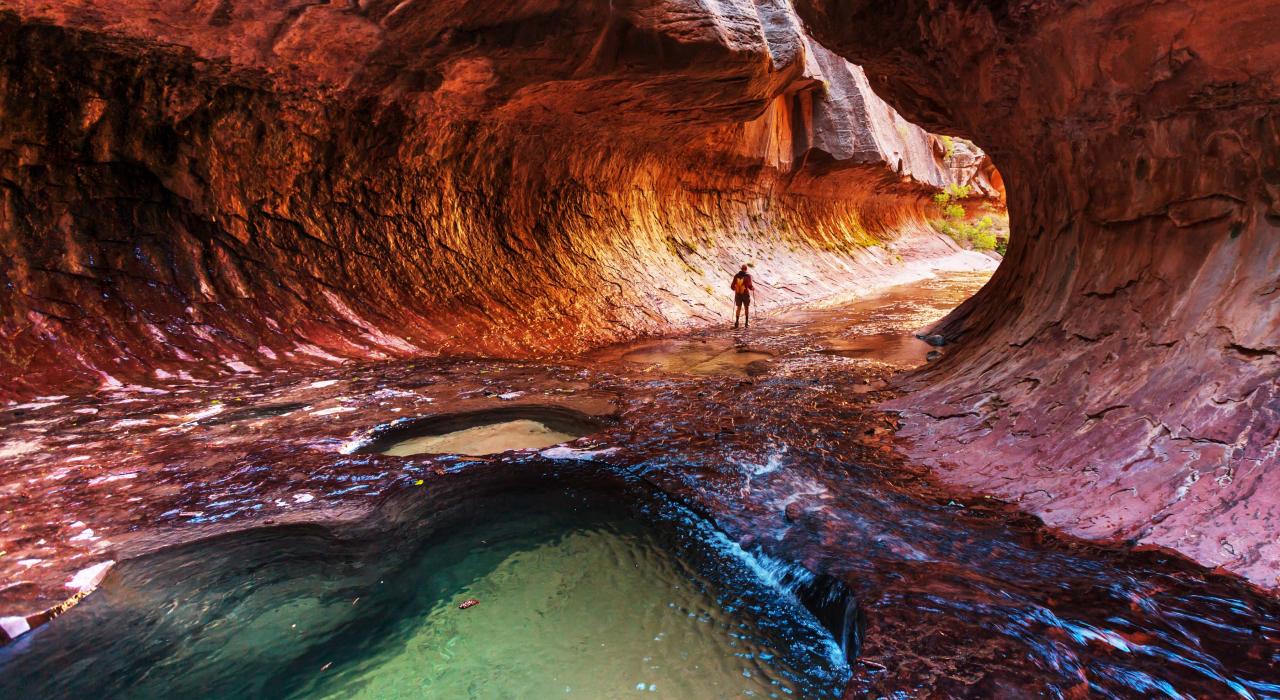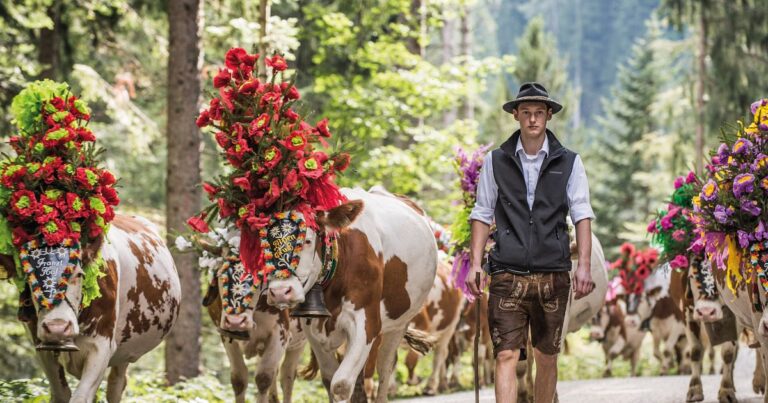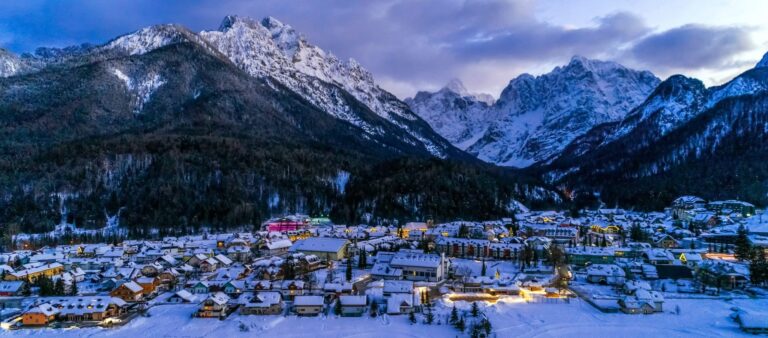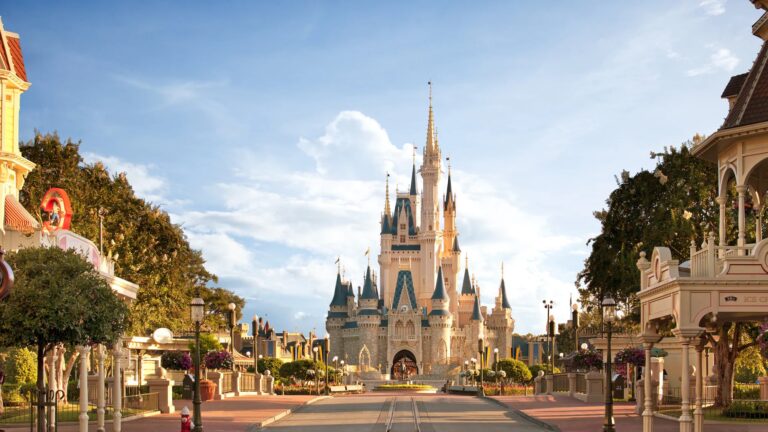Zion National Park Utah’s Natural Wonderland with a Touch of Adventure
When people talk about national parks in the United States, Zion always stands out, much like that one friend who’s both photogenic and adventurous. Tucked in southwestern Utah, Zion National Park isn’t just another pretty canyon; it’s Mother Nature showing off. Think towering red cliffs, slot canyons that look like they were carved by a giant with OCD-level precision, and hikes that make your Instagram followers say, “Wait, did you just Photoshop this?” Nope, that’s Zion, baby.
So, buckle up (or lace up your hiking boots), because this article is going to take you on a 3,000-word journey into Zion National Park, its history, jaw-dropping landscapes, legendary hikes, wildlife encounters, and why it feels like stepping into a real-life fantasy movie set.
Chapter 1: A Canyon is Born (The Origins of Zion)
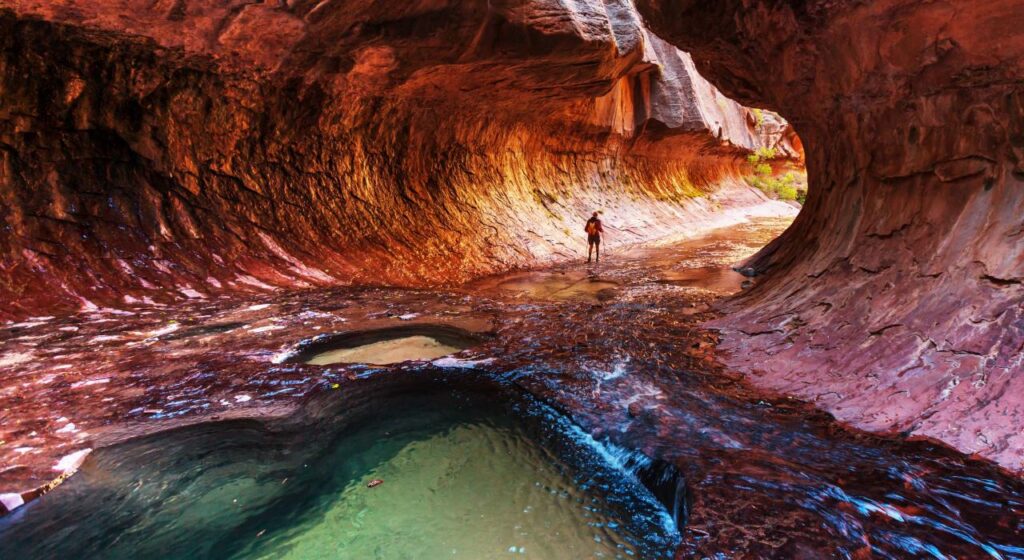
Millions of years ago, before TikTok dances and oat milk lattes, nature was busy sculpting what we now call Zion. The Virgin River sliced through layers of Navajo sandstone like it was slicing a birthday cake. Over time, it carved out cliffs that soar up to 2,000 feet tall. Imagine skyscrapers, but built by erosion instead of architects.
The name “Zion” comes from the early Mormon settlers in the 1860s, who thought the canyon was basically heaven on Earth. And honestly? They weren’t wrong. Before that, Native American tribes like the Ancestral Puebloans and the Southern Paiute had been living, farming, and thriving in the area for centuries. So while the settlers slapped the name “Zion” on it, the land already had deep roots in human history.
Fast forward to 1919, the U.S. government was like, “Yeah, this place is way too epic not to protect,” and officially turned it into a national park. Cue the flood of tourists, hikers, and nature photographers.
Chapter 2: The Jaw-Dropping Scenery
If Zion had a Tinder profile, its bio would be: “Tall, red, and can make you feel small.” The sandstone cliffs here are iconic, glowing in shades of red, orange, and cream, especially at sunrise and sunset. Some of the highlights include:
- Angels Landing: The celebrity hike of Zion. It’s steep, it’s scary, and it’s Instagram-famous. Chains bolted into the rock help hikers scramble along a narrow ridge with sheer drop-offs on both sides. Not for the faint of heart, but the views at the top? Worth every shaky knee.
- The Narrows: Imagine wading through a river that slices between 1,000-foot canyon walls. Yup, that’s The Narrows. Depending on water levels, you’re hiking, swimming, and occasionally praying you don’t drop your phone.
- Emerald Pools: A chill option if you don’t feel like risking your life. These pools and waterfalls are family-friendly but still gorgeous.
- Observation Point: Think Angels Landing, but with less terror and arguably better views.
- Kolob Canyons: The lesser-known cousin of Zion’s main canyon, offering solitude and equally stunning scenery.
Every corner of Zion feels like a movie set. Seriously, you half-expect a dragon or at least Indiana Jones to pop out.
Chapter 3: Wildlife Cameos
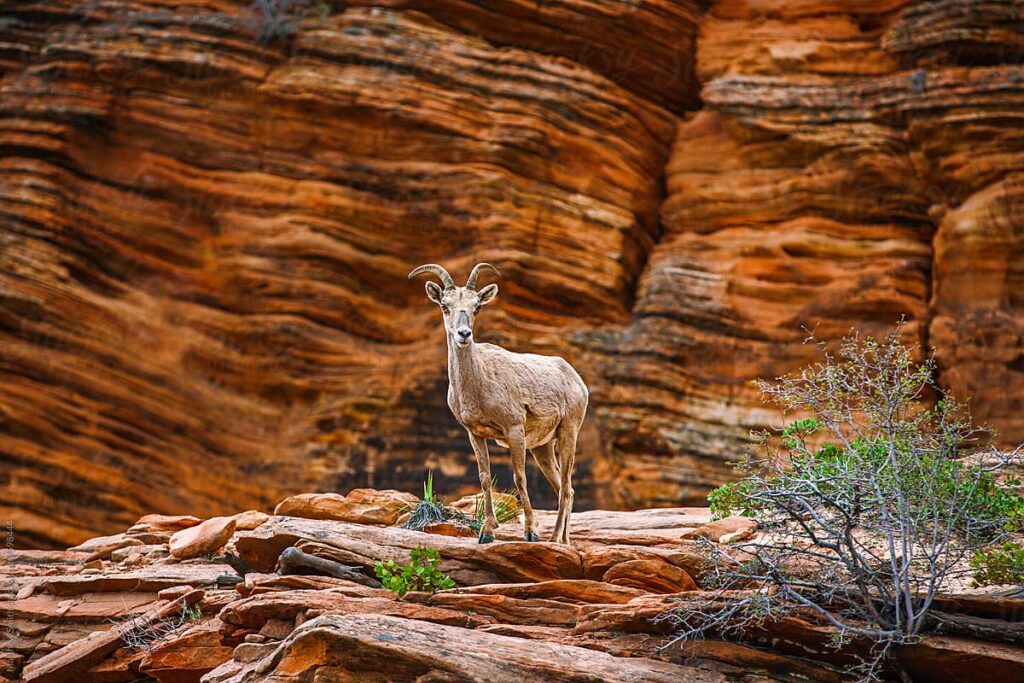
Zion isn’t just about rocks (though the rocks do steal the spotlight). The park is home to over 78 species of mammals, 291 species of birds, and a whole bunch of reptiles and amphibians. Translation: it’s a real-life National Geographic episode.
Keep your eyes peeled for:
- Desert bighorn sheep doing their mountain goat cosplay.
- California condors, which are prehistoric flying dinosaurs with a wingspan longer than a minivan.
- Mule deer casually photobombing your picnic.
- Rock squirrels, the real MVPs of snack theft.
Pro tip: Don’t feed the wildlife. That squirrel may look cute, but he’s plotting to steal your trail mix.
Chapter 4: Hiking Like a Legend
Zion is a Disneyland for hikers, except the rides are cliffs and rivers. Some of the legendary hikes include:
- Angels Landing: We mentioned it already, but it deserves another shoutout. Five miles of switchbacks, chains, and adrenaline.
- The Narrows: Slot canyon meets river trek. Waterproof shoes are highly recommended.
- Canyon Overlook Trail: Short, sweet, and gives you the “wow” factor without breaking too much sweat.
- Observation Point: An epic 8-mile round trip with panoramic views that’ll make you forget your aching calves.
- West Rim Trail: A backcountry beast for those who want bragging rights.
Each hike has its personality: thrilling, chill, or “why did I think this was a good idea?”
Chapter 5: Human History and Culture
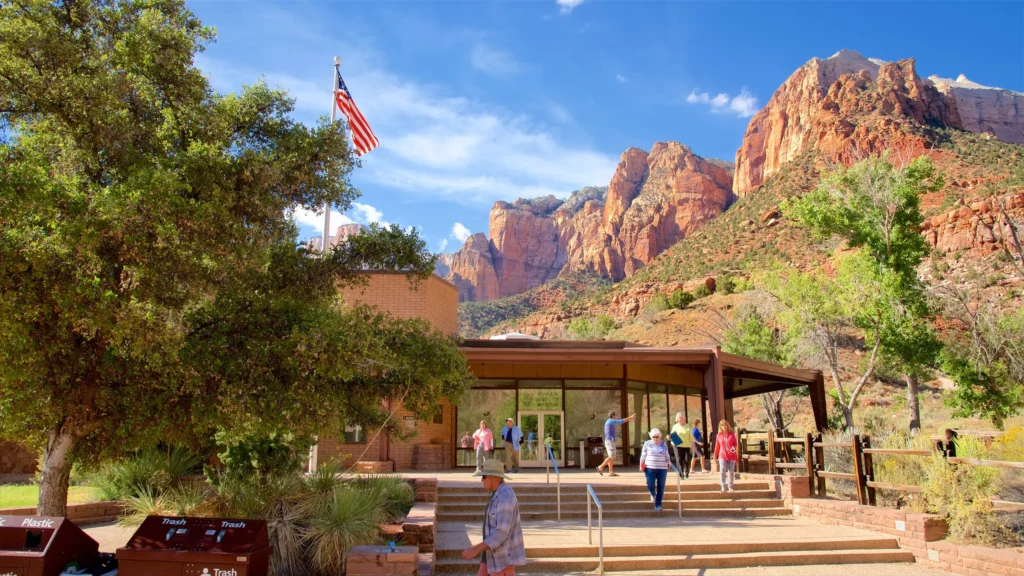
Long before Zion was trending on Instagram, Native Americans called it home. The Ancestral Puebloans farmed corn, beans, and squash in the fertile canyon floor. Rock art and cliff dwellings still echo their presence. Later, the Southern Paiute people lived here, calling the canyon “Mukuntuweap.” Translation? A land of straight canyons.
When Mormon settlers arrived, they named it “Zion,” meaning a place of refuge. For them, it symbolized heaven. But the story of Zion is a patchwork of cultures, all leaving their footprints (sometimes literally) in the canyon.
Chapter 6: Adventure Beyond Hiking
Sure, hiking is the star attraction, but Zion offers more ways to spice up your trip:
- Canyoneering: Think rappelling down slot canyons with ropes and gear. Indiana Jones meets CrossFit.
- Camping: Sleep under a blanket of stars, with coyotes singing backup vocals.
- Scenic Drive: If hiking isn’t your jam, the Zion Canyon Scenic Drive is like watching a highlight reel of the park’s best views from your car window.
- Photography: Sunrise and sunset turn the canyon into a painting. Golden hour here is cheating.
Chapter 7: Zion in Pop Culture
Unlike the Hollywood Sign, Zion doesn’t appear in every disaster movie, but it has had its close-ups. Its surreal landscapes have inspired filmmakers, photographers, and countless nature documentaries. Even video games borrow their canyon vibes.
Plus, Zion is an influencer’s dream. From TikTok hikers doing dances in The Narrows to drone shots over Angels Landing, Zion is quietly becoming a star in the social media age.
Chapter 8: Tips for Surviving Zion (Without Becoming a Headline)
- Hydrate or Die-drate: Utah sun is no joke. Bring more water than you think you need.
- Start Early: Trails get crowded fast. Sunrise hikes = fewer people + cooler temps.
- Gear Up: Good shoes, sunblock, and snacks. (Trail mix = hiker currency.)
- Shuttle System: During peak season, cars aren’t allowed in the main canyon. Hop on the free shuttles.
- Respect Nature: Stay on trails, don’t carve your name into rocks, and yes, that squirrel doesn’t need your Doritos.
Chapter 9: Why Zion Steals Hearts
At the end of the day, Zion isn’t just about cliffs and canyons. It’s about perspective. Standing at the bottom of a canyon wall that towers over you, you realize how tiny you are in the grand scheme of things. But instead of feeling insignificant, Zion makes you feel alive, connected, and grateful.
It’s a place where adrenaline junkies, families, and soul-searchers all find something magical. And that’s why Zion is more than a national park, it’s a natural cathedral where nature preaches in red rock sermons.
Final Take: Zion Forever
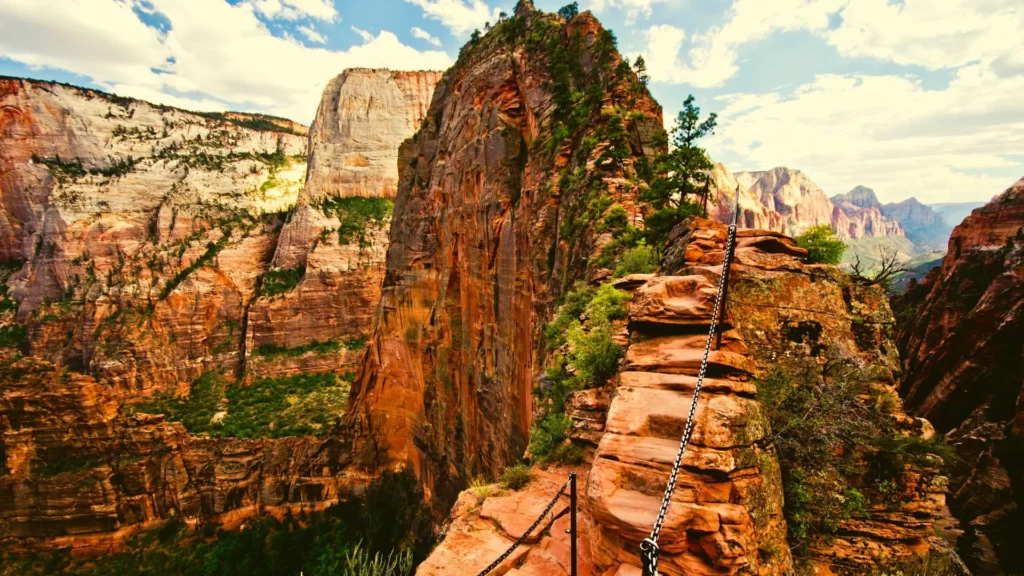
So, whether you’re clinging to chains on Angels Landing, wading through the Narrows, or just chilling at a scenic overlook, Zion National Park is a reminder that Earth knows how to throw a good party. The kind with sunsets, stars, and just enough danger to make you feel like the main character in an adventure movie.
Pack your boots, charge your camera, and get ready to meet Utah’s most dramatic superstar. Zion isn’t just a place, i t’s a feeling. And once you’ve been there, a piece of your heart stays in those red cliffs forever.

